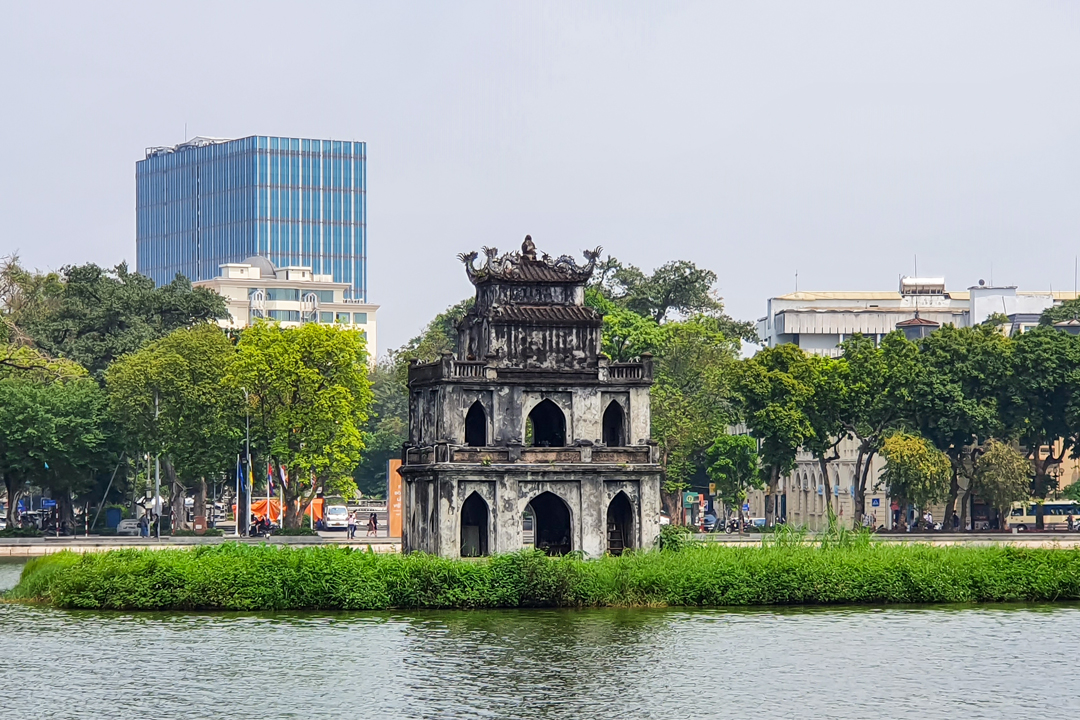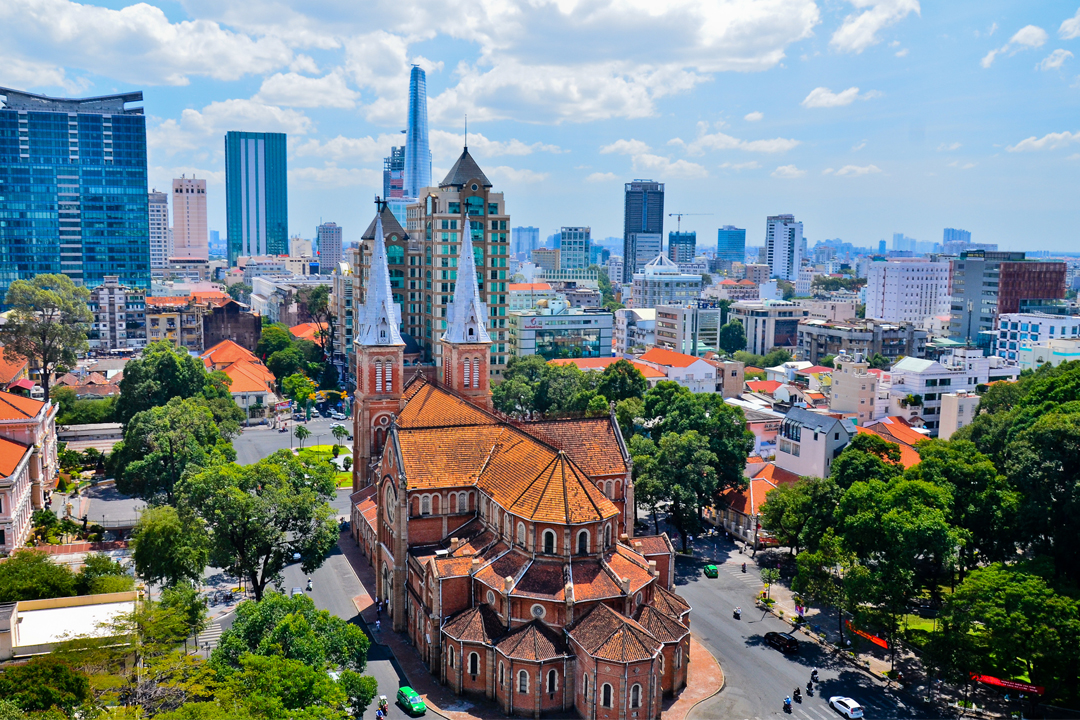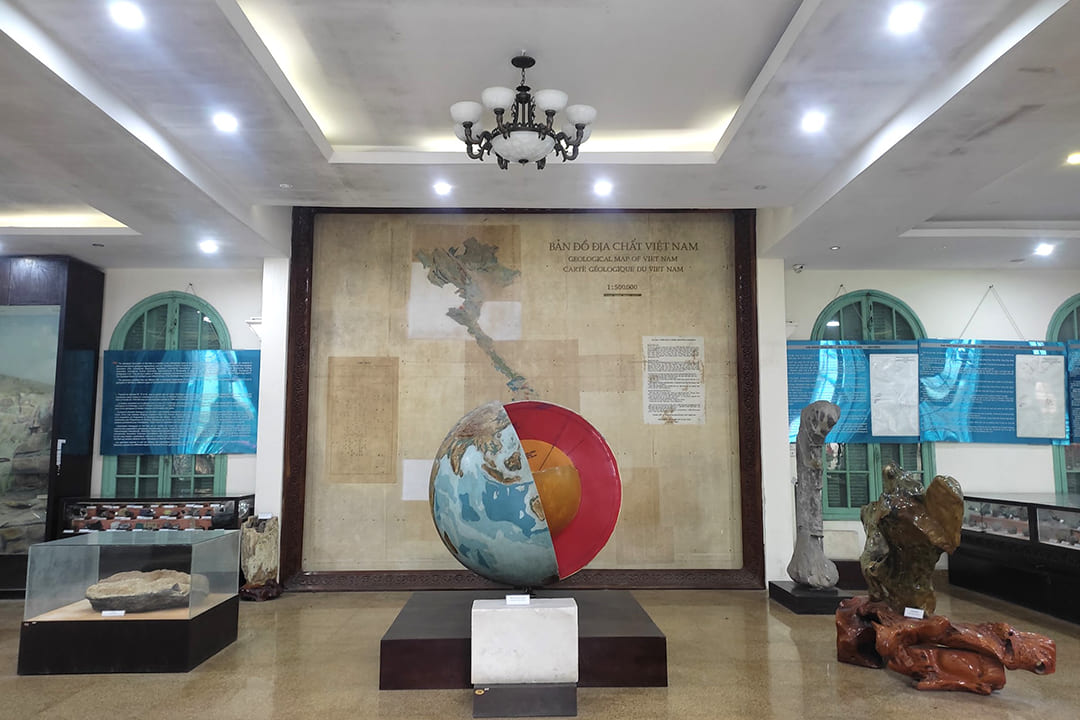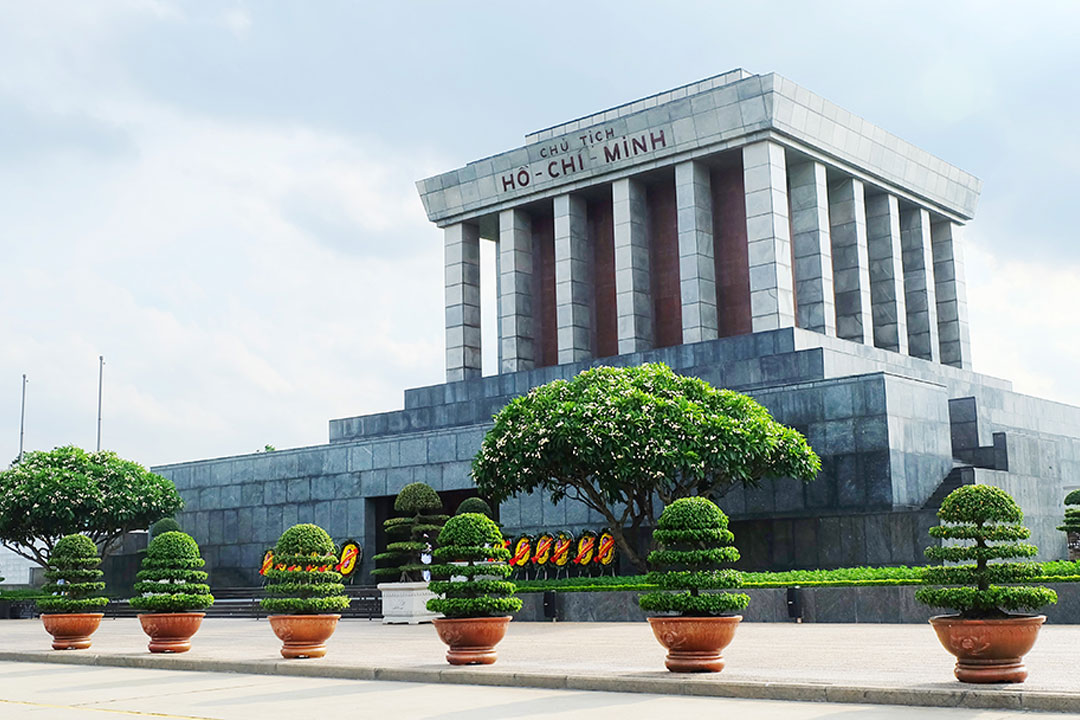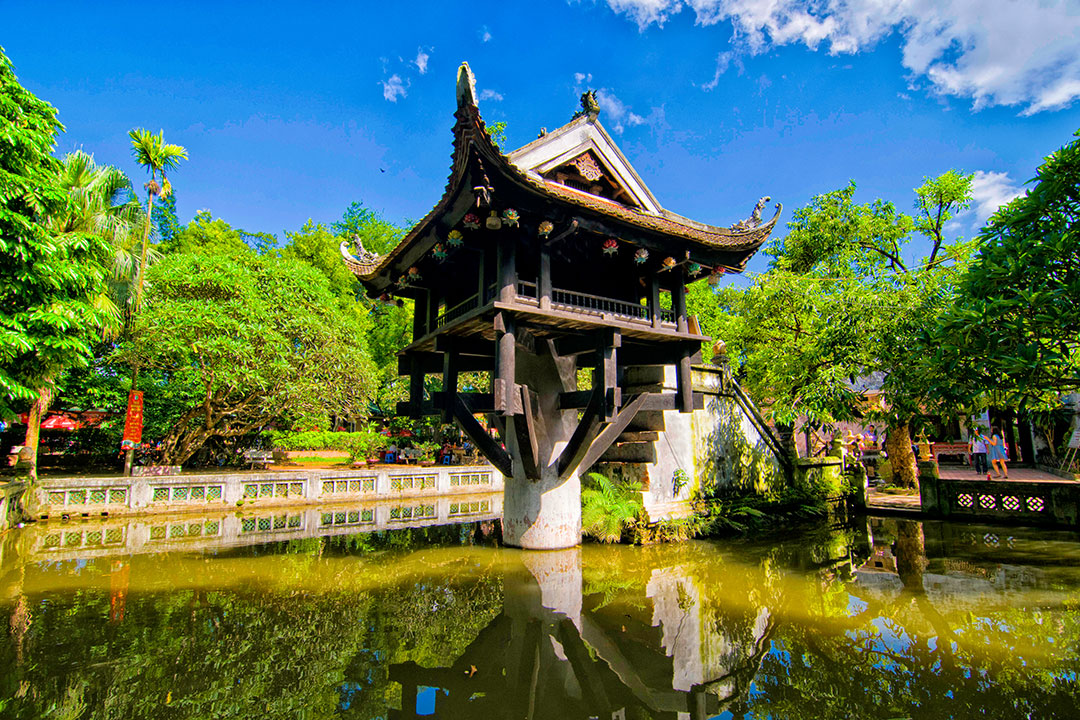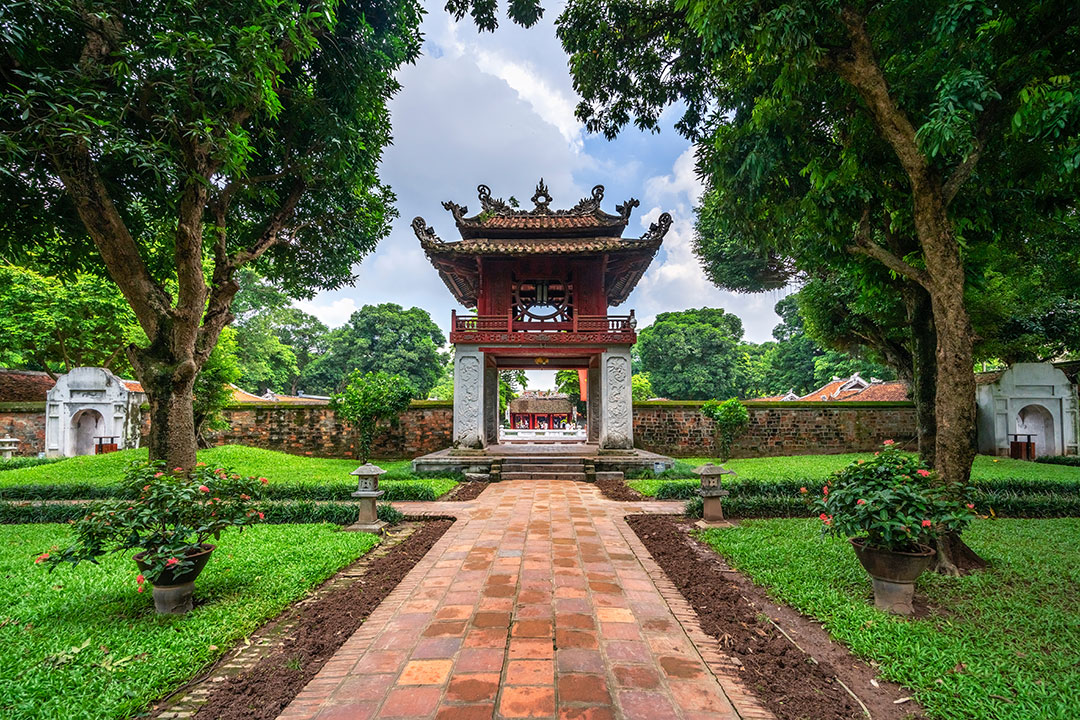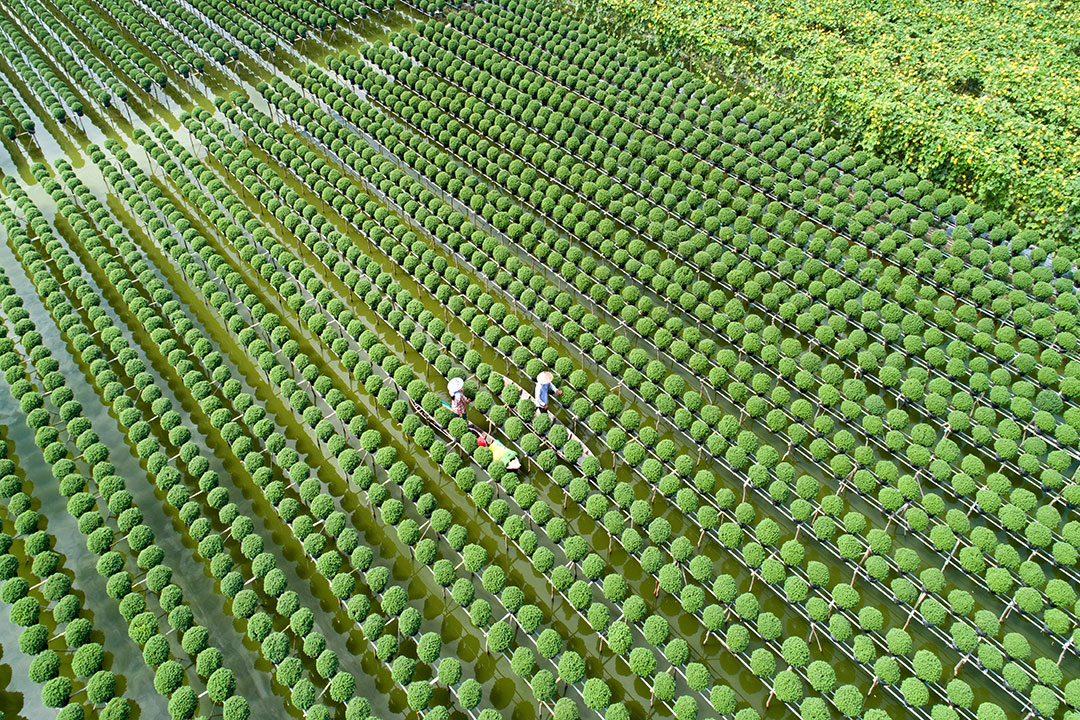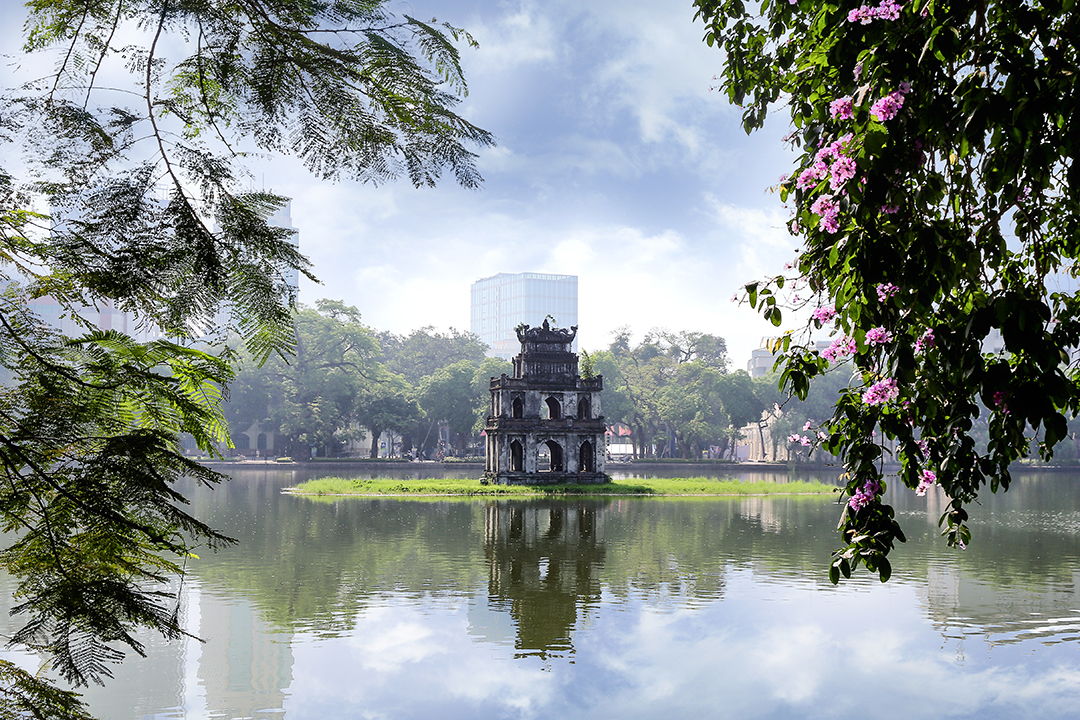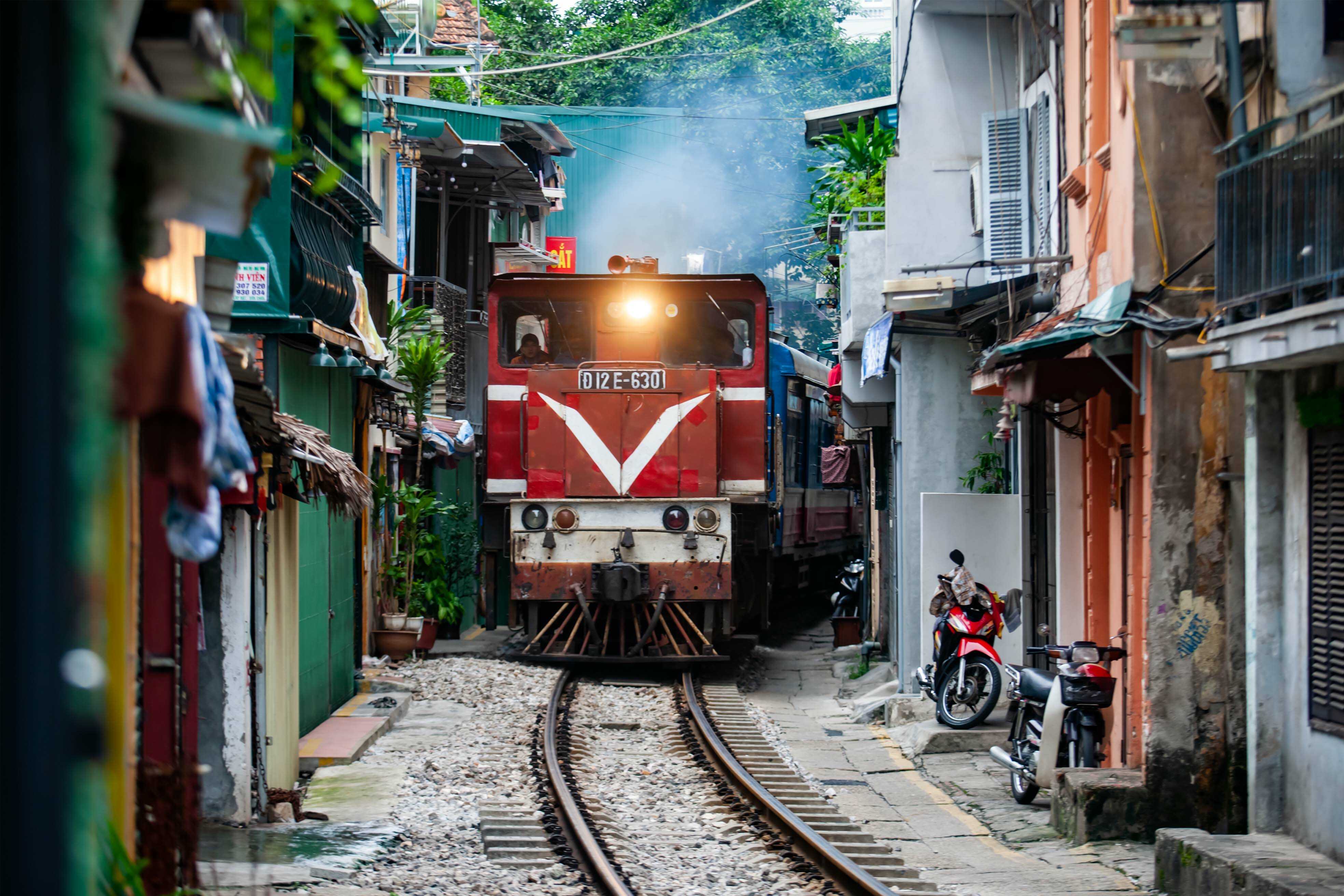Geological Museum in Hanoi: Location, History, Things To Do & Important Notes
Hanoi, a city bursting with cultural and historical wonders, offers more than its bustling streets and vibrant cuisine. Tucked away in this dynamic metropolis is the Geological Museum, which unveils the Earth’s ancient stories through its extensive collection of geological treasures. As you wander through its captivating exhibits, you'll encounter the fascinating textures and colors of minerals, rocks, and fossils that map our planet's evolution over millions of years. For travelers seeking a deeper understanding of Earth's history or budding geologists eager to complement their knowledge with real-world specimens, visiting this museum can be an enlightening experience. GTrip invites you to embark on a journey where Hanoi's rich natural heritage unfolds before your eyes, perfect for those looking to blend curiosity-driven exploration with their travel itinerary.
About the Geological Museum of Vietnam
Location: 6 Pham Ngu Lao Street, Cua Nam Ward (6 Pham Ngu Lao Street, Phan Chu Trinh Ward, Hoan Kiem District, Hanoi)
The Geological Museum in Hanoi stands as the country's premier geological institution. This scientific treasure house showcases an impressive collection of over 4,000 meticulously cataloged specimens, including rocks, minerals, precious ores, and ancient fossils. The museum serves as both a research center and an educational facility, offering tourists a fascinating journey through Vietnam's rich geological history and natural resources.
The museum's comprehensive exhibits document Vietnam's diverse geological formations and mineral wealth, providing context for understanding the nation's natural landscape development. You can explore everything from rare gemstones and prehistoric fossils to interactive displays explaining geological processes that shaped Vietnam over millions of years.
Essential visitor information
Entry to the Geological Museum of Vietnam is completely free of charge for all visitors. The museum welcomes guests Monday through Friday, operating from 8:00 am until 12:00 pm and reopening from 1:00 pm to 5:00 pm daily. Plan your visit accordingly, as the museum remains closed every Saturday and Sunday. The facility also observes all Vietnamese public holidays with full-day closures. Photography is generally permitted throughout the exhibition halls for personal use. Most exhibits feature informational displays in both Vietnamese and English for international visitors. The museum occasionally offers guided tours for groups with advance arrangements.
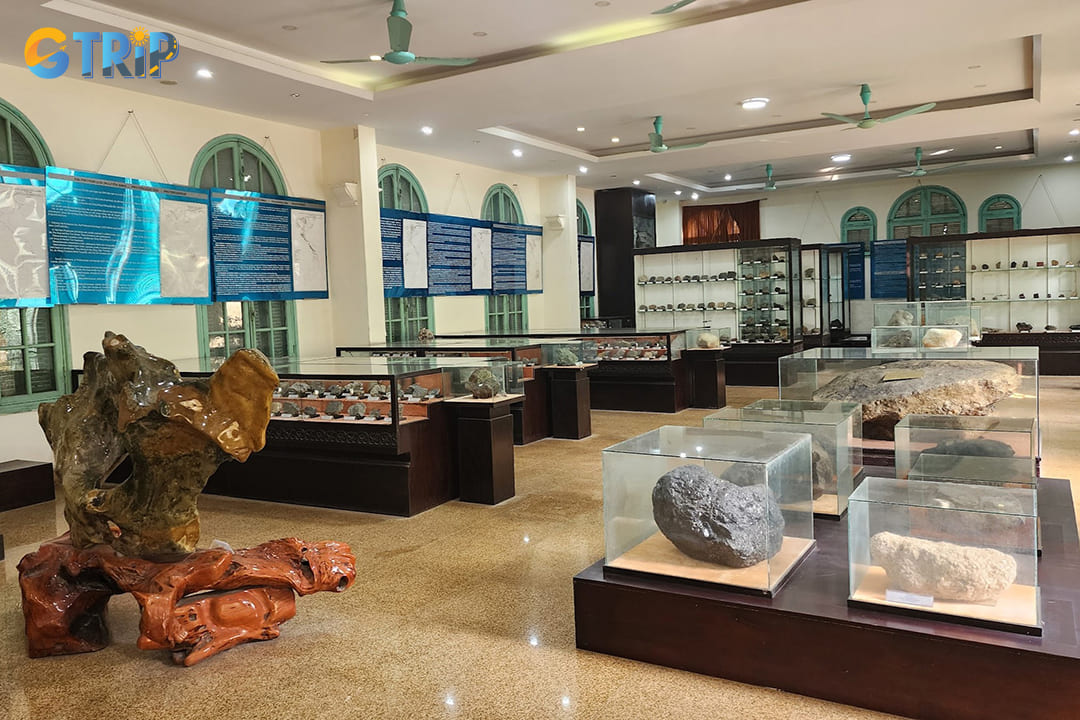
Entry to the Geological Museum of Vietnam is completely free of charge for all visitors
The rich history behind Hanoi's Geological Museum
The museum's origins trace back to 1898 with the establishment of the Indochinese Geological Department by French authorities. French geologists Honore Lantenois and Henri Mansuy oversaw the museum building's completion in 1914, marking its official opening. By 1928, the collection had expanded dramatically with specimens gathered from throughout Indochina. The curators organized exhibits into four main sections: mineralogy, petrology, paleontology, and prehistory. Following Hanoi's liberation in 1954, the museum transferred to Vietnam's Geology Department within the Ministry of Industry. Many valuable specimens were temporarily relocated to Saigon during this transitional period. Soviet expertise arrived in 1963 when the Leningrad Geological Museum's director provided guidance for exhibition reorganization. The museum flourished as an independent entity beginning in 1991 under Vietnam's Geological Department. Major renovations between 1996 and 1999 expanded the facility to three floors covering 1,200 square meters, with modernized displays following Vietnam's 1996 Mineral Law.
Architectural features of the Geological Museum of Vietnam
The museum showcases classic early 20th-century French colonial architecture that emphasizes both form and function. Its three-story structure blends European design elements with practical exhibition spaces throughout its 1,200 square meters. Tall windows allow natural light to illuminate mineral specimens while maintaining conservation standards for sensitive items. The building features high ceilings with ornamental moldings that reflect its scientific purpose and colonial heritage. Display cases throughout the museum utilize glass and metal frames for optimal specimen viewing. Each cabinet provides security while maintaining visibility for tourists examining the geological treasures. The entrance hall features a grand staircase with wrought iron railings leading to upper exhibition floors. The museum represents one of Hanoi's most significant colonial-era scientific buildings, still serving its original purpose. Recent renovations have carefully preserved the structure's historical elements while accommodating modern museum standards.
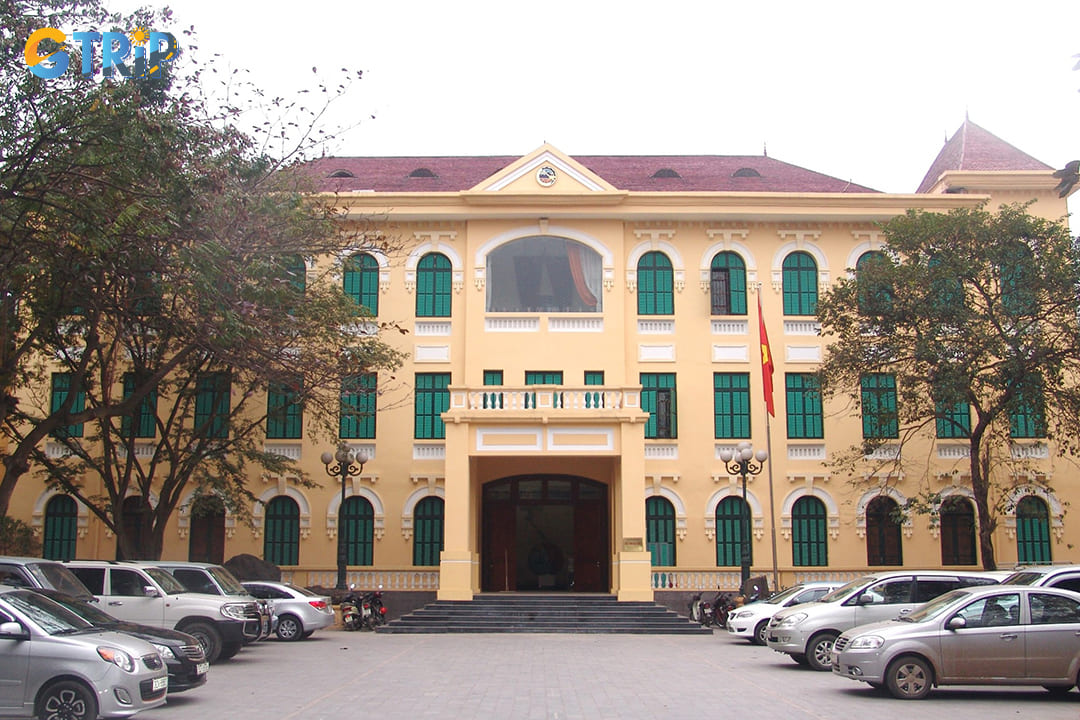
The museum showcases classic early 20th-century French colonial architecture that emphasizes both form and function
6 things to do at the Geological Museum
The Geological Museum of Vietnam offers a wealth of experiences for science enthusiasts and casual visitors alike. The museum provides comprehensive insights into Vietnam's extraordinary geological richness. You can explore multiple floors of carefully curated specimens, educational displays, and interactive exhibits that bring Earth's history to life.
1. Explore the courtyard exhibits
Begin your geological journey in the museum's impressive outdoor courtyard, where an exceptional collection of large-scale specimens welcomes tourists. Massive stone monoliths, carefully labeled with their origins and geological significance, create a striking first impression. The courtyard features imposing rock formations representing Vietnam's diverse geological regions, from limestone karsts to volcanic basalt.
You can walk among impressive fossilized tree trunks that offer glimpses into prehistoric forests that once covered the region. Several large ore samples showcase Vietnam's mineral wealth, with informational placards explaining their economic importance. The outdoor exhibition area provides excellent photo opportunities while functioning as an educational preview of the treasures awaiting inside the main building.
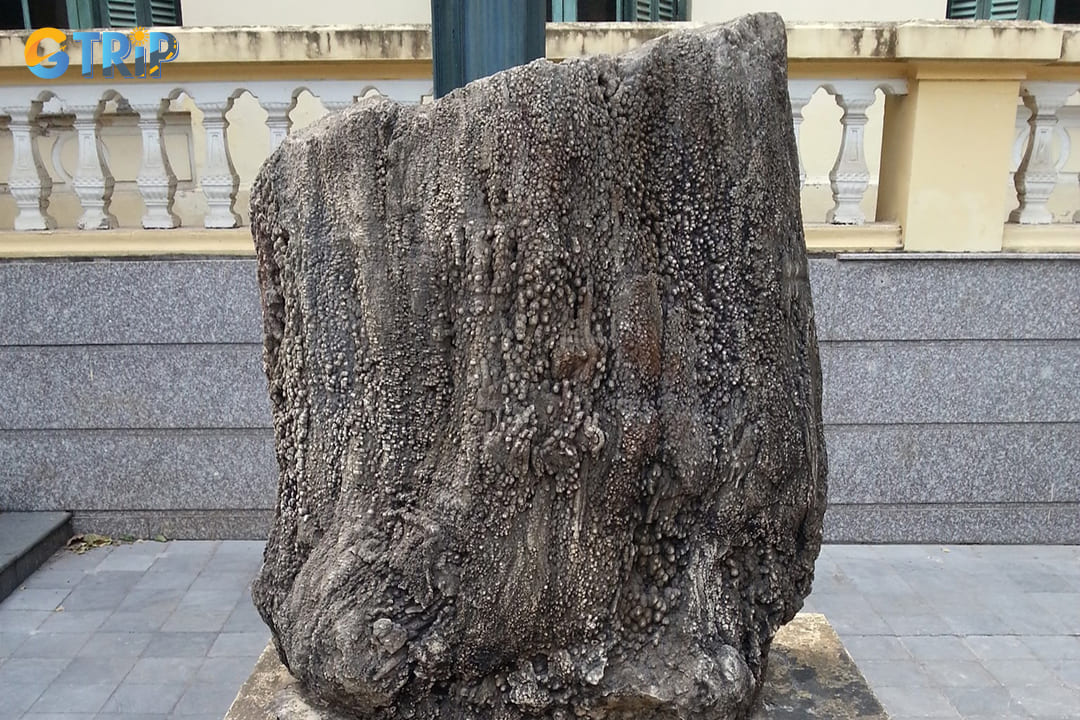
Begin your geological journey in the museum's impressive outdoor courtyard, where an exceptional collection of large-scale specimens welcomes tourists
2. Participate in thematic and special exhibitions
The museum hosts a variety of engaging exhibitions throughout the year that showcase Vietnam's geological wonders. Permanent exhibitions cover fundamental topics like Earth's formation and Vietnam's geological timeline through interactive displays and informative panels. You can marvel at rare artifacts, including the massive fossilized femur of a Titanosaurus dinosaur that once roamed Vietnam millions of years ago.
The collection also features ancient meteorites that provide tangible connections to our solar system's formation. Special temporary exhibitions regularly refresh the museum experience, focusing on themes like climate change impacts or recent paleontological discoveries. These limited-time displays often incorporate cutting-edge research findings and newly discovered specimens from fieldwork across Vietnam. The specialized collections provide researchers and enthusiasts with extraordinary access to fossils, minerals, rocks, and geological publications for deeper learning opportunities.
3. Discover Vietnam's geological history on the 1st floor
The first floor takes you on a chronological journey through Earth's formation and Vietnam's geological development. Engaging displays explain how our solar system formed and Earth's position within it through models and multimedia presentations. You can follow Vietnam's geological evolution across millions of years through impressive dioramas showing ancient landscapes and extinct creatures.
The exhibits demonstrate fundamental geological processes, including volcanic activity, mountain formation, and sedimentary layering through interactive models. Comprehensive displays showcase Vietnam's rich mineral potential with examples of economically important resources that drive the nation's development. Maps and comparative displays place Vietnam's unique geological features in context with similar formations worldwide, highlighting both commonalities and distinctive characteristics.
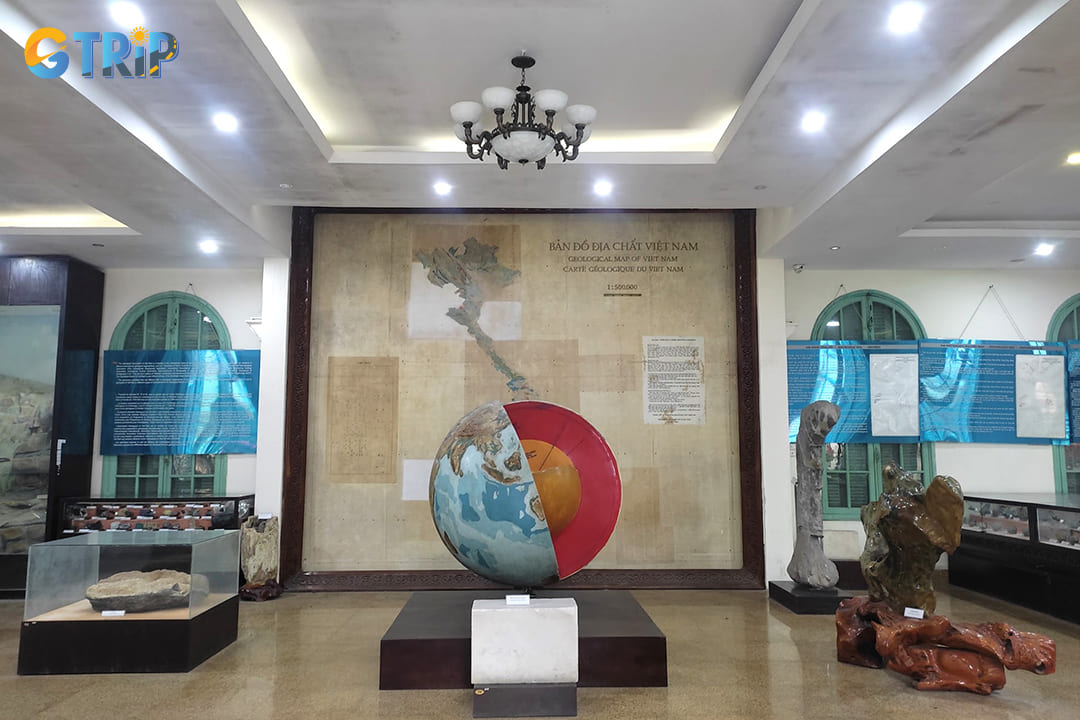
The first floor takes you on a chronological journey through Earth's formation and Vietnam's geological development
4. Study regional geology and mineral resources on the 2nd floor
The second floor organizes Vietnam's geological story by region, allowing you to understand local variations across the country. The Northeast region exhibits limestone karst formations and coal deposits that have shaped the area's economy and landscape. Displays dedicated to Northwest Vietnam showcase mountainous terrain with detailed models of the region's complex geological folding patterns.
The North Central section highlights volcanic activity and basalt formations that created fertile agricultural land throughout history. The mineral wealth exhibits display impressive specimens of gold, copper, and rare earth elements extracted from Vietnamese mines. Interactive maps of the East Sea and continental shelf illustrate offshore resources and geological formations beneath Vietnam's coastal waters.
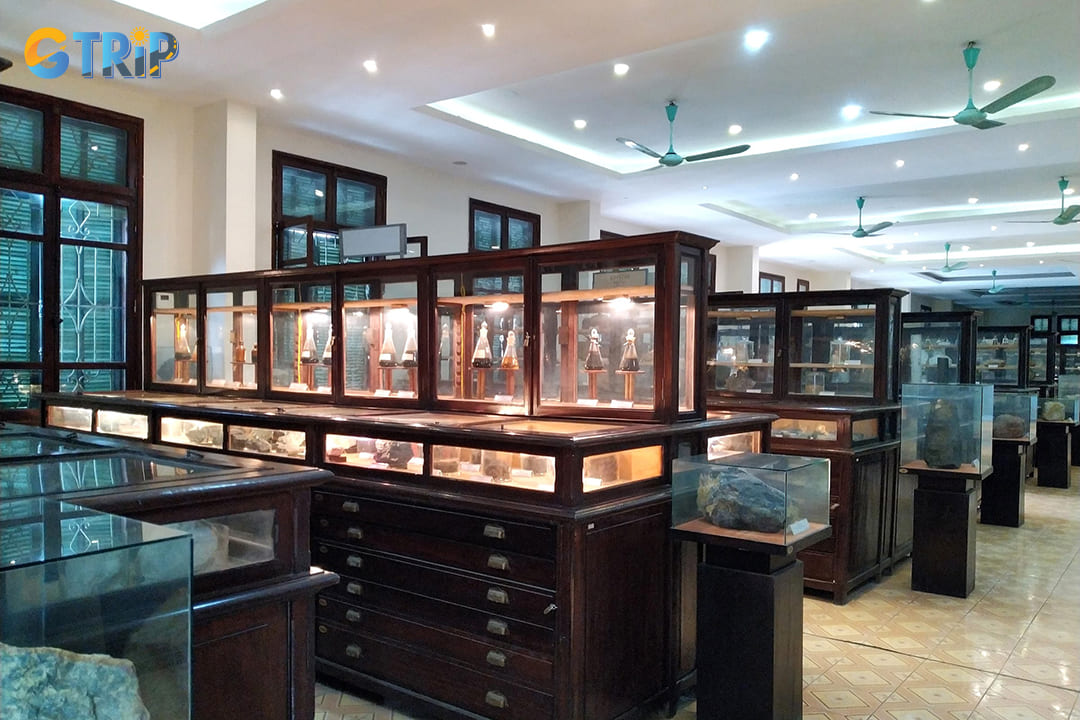
The second floor organizes Vietnam's geological story by region, allowing you to understand local variations across the country
5. Explore specialized collections on the 3rd floor
The third floor houses the museum's most scientifically valuable collections, including exceptionally preserved fossils of ancient marine creatures. You can examine fossilized shells, plants, and animal remains that document life's evolution throughout Vietnam's geological past. The mineral gallery showcases hundreds of specimens organized by type, with striking examples of crystal formations displaying vivid colors and unique structures.
The rock and ore collection demonstrates the incredible diversity of Vietnam's geological composition through carefully labeled specimens. Researchers and students appreciate the extensive geological publications library that includes historic surveys, maps, and contemporary scientific journals. This floor provides the most detailed scientific information, making it particularly valuable for geology students and professionals seeking specific data.
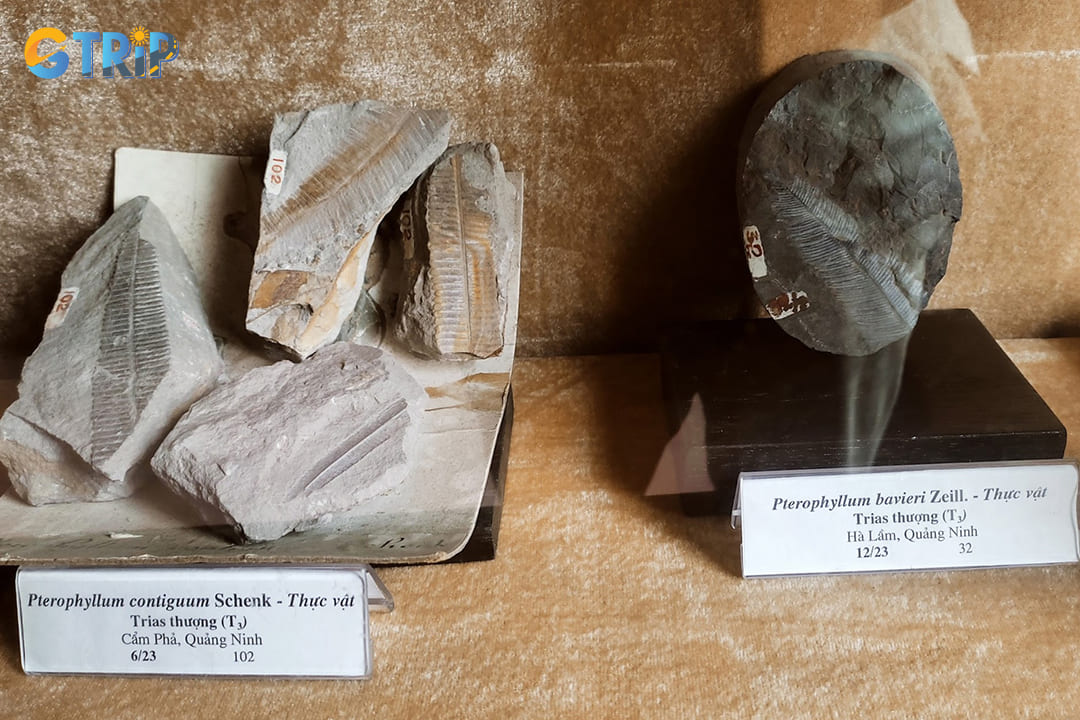
You can examine fossilized shells, plants, and animal remains that document life's evolution throughout Vietnam's geological past
6. Take photographs of the collections
Photography enthusiasts will find countless opportunities to capture Vietnam's geological heritage throughout the museum's first two floors. You can photograph the impressive dinosaur fossils that serve as centerpieces in several exhibition halls. The mineral collection offers excellent macro photography possibilities with its vibrant crystals and intricate formations displayed under perfect lighting conditions.
Large-scale geological models and reconstructions provide excellent photographic subjects that help explain complex Earth processes. Tourists should note that photography restrictions apply in certain areas to protect light-sensitive specimens from damage. The outdoor courtyard provides excellent natural lighting for photographing large specimens against the backdrop of Hanoi's urban landscape.
| Best photography opportunities | Description | Floor location |
|---|---|---|
| Titanosaurus fossil | Massive dinosaur femur bone displayed in central hall | 1st Floor |
| Mineral crystal collection | Vibrant, colorful crystal formations | 2nd Floor |
| Volcanic rock display | Basalt formations showing distinct cooling patterns | 2nd Floor |
| Geological maps | Detailed topographical models of Vietnam's regions | 2nd Floor |
| Meteorite collection | Space rocks with distinctive surface features | 1st Floor |
| Outdoor monoliths | Massive rock specimens in natural lighting | Courtyard |
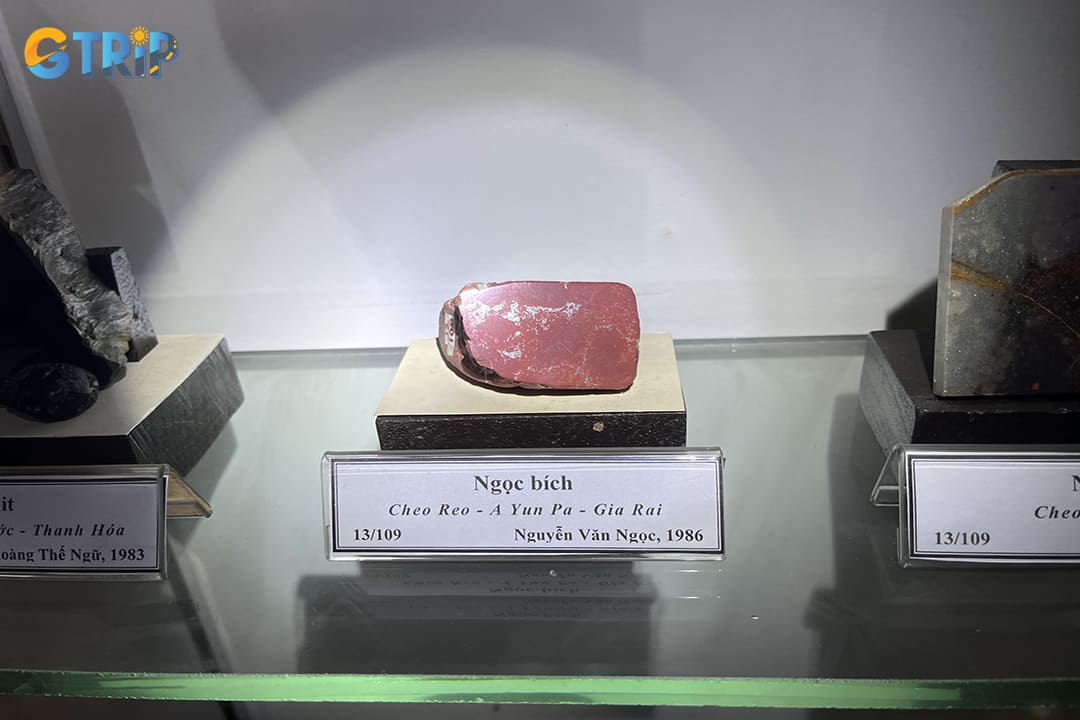
The mineral collection offers excellent macro photography possibilities with its vibrant crystals and intricate formations displayed under perfect lighting conditions
How to get to the Geological Museum of Vietnam?
Reaching the Geological Museum of Vietnam is straightforward as it's centrally located in Hanoi at Pham Ngu Lao Street in the Hoan Kiem District. The museum is easily accessible via multiple transportation options that cater to different preferences and budgets. Here's a comprehensive guide to help you navigate your way to this geological treasure trove.
By bus
Taking a public bus is the most economical option for visiting the Geological Museum, with fares typically ranging between 7,000 - 10,000 VND (approximately $0.30 - $0.45) per trip.
- Bus 02: Operates between Bac Co - Yen Nghia, stopping near the museum
- Bus 03: Runs from Giap Bat to Gia Lam bus stations
- Bus 19: Connects Long Bien and Tran Khanh Du
- Bus 35: Services between Tran Khanh Du and Cau Giay
- Bus 42: Runs between Giap Bat and Dan Phuong
- Bus 43: Connects Giap Bat and Van Dinh
- Bus 44: Services from Long Bien to Nam Thang Long
- Bus 48: Operates between Giap Bat and Noi Bai
- Bus 49: Runs from Giap Bat to Co Loa
- Bus 51: Connects Cong vien Thong Nhat and Dong Anh
- Bus 55: Services between Long Bien and Xuan Mai
When taking the bus, look for stops near Pham Ngu Lao Street or the nearby intersection with Tran Hung Dao Street. Most buses run frequently from early morning until around 9 PM.
By taxi or ride-hailing apps
Taking a taxi or using ride-hailing apps like Grab or Be is a convenient and direct way to reach the Geological Museum of Vietnam. The museum's central location means travel times are relatively short from popular tourist areas:
- From Hoan Kiem Lake: 5 - 10 minutes (approximately 30,000 - 50,000 VND or $1.30 - $2.20)
- From the Old Quarter: 5 - 10 minutes (approximately 30,000 - 60,000 VND or $1.30 - $2.60)
- From West Lake area: 15 - 20 minutes (approximately 70,000 - 120,000 VND or $3.00 - $5.20)
When using ride-hailing apps, simply enter "Bao tang Dia Chat Viet Nam" or "Vietnam Geological Museum" as your destination. For taxis, it's helpful to have the address written down in Vietnamese to show the driver: "Bao tang Dia Chat, so 6 Pham Ngu Lao, Hoan Kiem, Ha Noi".
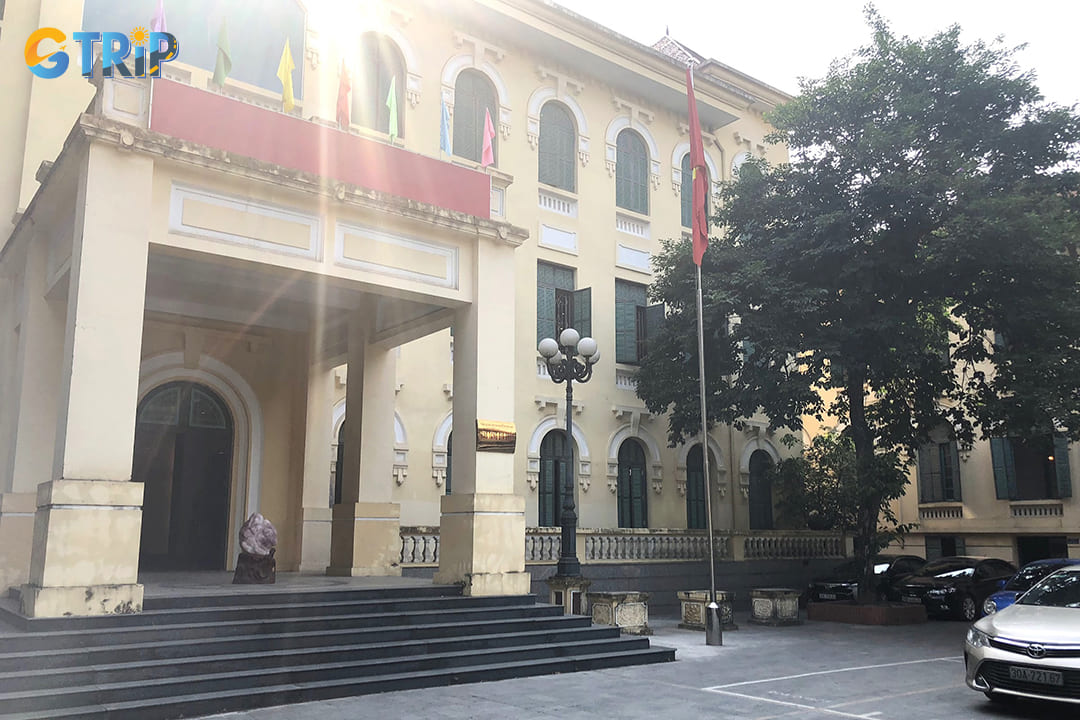
Reaching the Geological Museum of Vietnam is straightforward as it's centrally located in Hanoi at Pham Ngu Lao Street in the Hoan Kiem District
By motorbike rental
Renting a motorbike gives you the freedom to explore Hanoi at your own pace and easily reach the Geological Museum along with other attractions in a single day. Motorbike rental costs in Hanoi typically range between 130,000 to 300,000 Vietnamese Dong (VND) per day, roughly $5 to $12 USD, depending on the model and rental duration. Most hotels and hostels in Hanoi can arrange motorbike rentals, or you can use dedicated rental services in the tourist areas.
Important considerations for motorbike rental:
- Parking: The museum has designated parking for motorbikes with a small fee (typically 5,000 - 10,000 VND)
- Navigation: Consider using offline maps like Maps.me or Google Maps with downloaded Hanoi maps
- Traffic: Hanoi traffic can be intimidating for first-timers; consider practicing in less congested areas first
- License requirements: Technically, an International Driving Permit is required, though this is rarely checked for tourists
- Helmet: Always wear the helmet provided by the rental company as it's both legally required and essential for safety
Important notes when visiting the Geological Museum of Vietnam
Enhancing your experience at the Geological Museum of Vietnam requires understanding a few essential guidelines. Following these visitor protocols ensures both the preservation of the collection and a pleasant experience for everyone exploring this Hanoi gem.
Museum etiquette and rules
The Geological Museum welcomes photography in most areas, allowing you to capture memories of your visit. However, certain restrictions apply to protect the exhibits:
- Photography guidelines: Still photography is generally permitted throughout the museum, but avoid using flash as it can damage sensitive specimens
- Equipment restrictions: Tripods, selfie sticks, and professional photography equipment may require prior permission
- Restricted areas: Some special exhibitions or newly acquired specimens may have photography limitations
Proper handling of exhibits is crucial for their preservation:
- No-touch policy: Refrain from touching any specimens, minerals, or fossils unless explicitly marked as interactive displays
- Barrier respect: Stay behind all ropes, glass cases, and designated barriers
- Report concerns: If you notice any damaged exhibits or potential issues, inform museum staff immediately
Visitor comfort and practical information
The museum strives to maintain a conducive environment for learning and appreciation:
| Consideration | Details |
|---|---|
| Noise level | Maintain conversational voices; guided tours should use provided headsets |
| Group size | Groups larger than 10 people should pre-arrange their visit |
| Accessibility | Wheelchair access available; elevators connect all floors |
| Rest areas | Seating is available in designated areas throughout the museum |
For health and safety reasons, certain restrictions apply:
- Food and beverages: Not permitted in exhibition halls; a small cafe is available in the courtyard
- Personal items: Large backpacks must be stored in provided lockers
- Health measures: Hand sanitizing stations are located throughout the museum
- Current Regulations: Mask requirements and social distancing measures may vary based on current health advisories - check the museum's website before visiting
Following these guidelines ensures both the preservation of Vietnam's geological treasures and a meaningful, educational experience for all tourists.
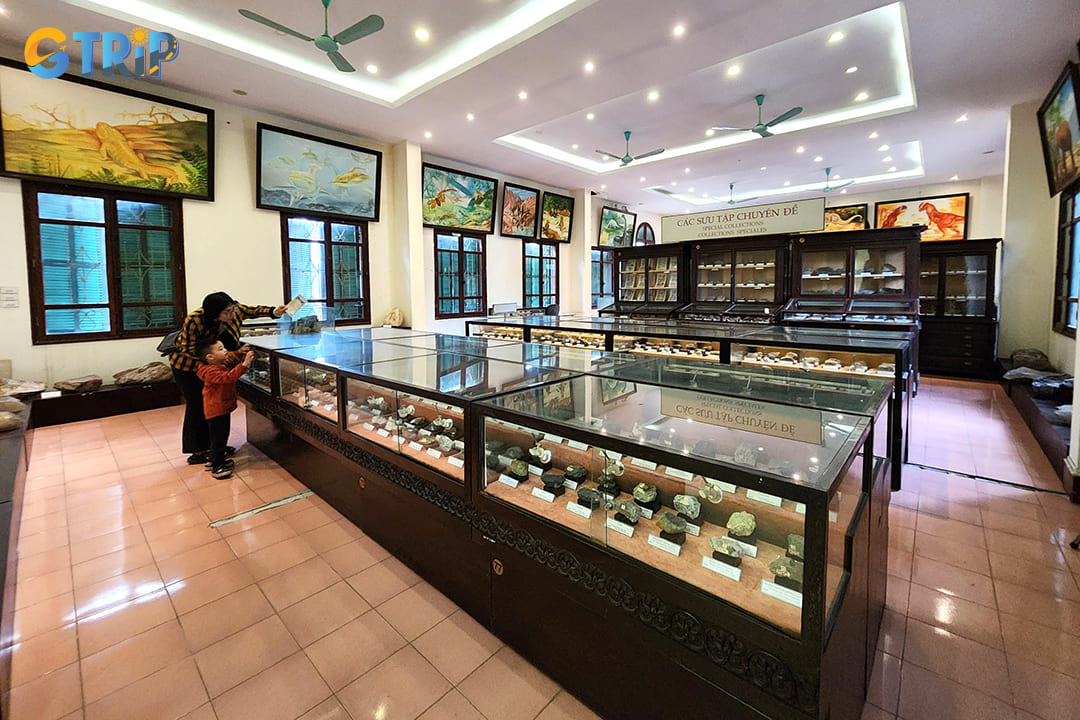
Enhancing your experience at the Geological Museum of Vietnam requires understanding a few essential guidelines
Nearby attractions from the Geological Museum of Vietnam
The Geological Museum of Vietnam sits in a prime location in Hanoi's cultural district, surrounded by several significant landmarks within walking distance. After exploring Vietnam's geological wonders, you can easily extend their cultural journey by visiting these nearby attractions, all within a 5-minute walk. Each site offers unique insights into Vietnam's rich history and culture, making for an enriching day of exploration in Hanoi's historic center.
Hanoi Opera House (350m)
Located just 350 meters from the Geological Museum at 1 Trang Tien Street, Hanoi Opera House stands as one of the city's most elegant colonial landmarks. Built between 1901 and 1911 during French rule, this architectural masterpiece resembles the Palais Garnier in Paris with its distinctive yellow facade and European design elements.
You can admire the opera house's grand exterior with its ornate detailing and dramatic columns, or attend a performance inside its opulent interior. The venue hosts various cultural events including:
- Traditional Vietnamese performances
- Ballet and contemporary dance
- Classical music concerts
- Opera performances
- Modern theatrical productions
Performance schedule and ticket information:
| Show type | Typical price range (VND) | Best time to visit |
|---|---|---|
| Vietnamese Traditional | 300,000 - 700,000 | Evening performances (7:00 PM) |
| International Classical | 500,000 - 1,500,000 | Weekend performances |
| Ballet/Opera | 400,000 - 2,000,000 | Special seasonal events |
Even if you don't attend a performance, the Opera House makes for excellent photographs, especially when illuminated at night, offering a glimpse into Vietnam's French colonial past.

You can admire the opera house's grand exterior with its ornate detailing and dramatic columns, or attend a performance inside its opulent interior
Vietnam Museum of Revolution (300m)
Just 300 meters from the Geological Museum at 25 Tong Dan Street, Vietnam Museum of Revolution chronicles Vietnam's struggle for independence through an extensive collection of artifacts, documents, and photographs. Housed in a French colonial building that once served as the Vietnamese Trade Department, the museum offers a compelling narrative of Vietnam's revolutionary history.
The museum features over 40,000 exhibits organized chronologically, detailing Vietnam's resistance against foreign powers and its journey to independence. History enthusiasts will appreciate the museum's thorough documentation of:
- The early resistance movements against French colonization
- The formation of the Communist Party of Vietnam
- The First Indochina War (1946 - 1954)
- The Vietnam War (or American War as it's known locally)
- Post-war reconstruction and development
For international tourists, the museum provides an important Vietnamese perspective on historical events that may differ from Western narratives. Allow approximately 1-2 hours to properly explore the exhibits, which include original weapons, uniforms, propaganda posters, and personal items from revolutionary leaders.
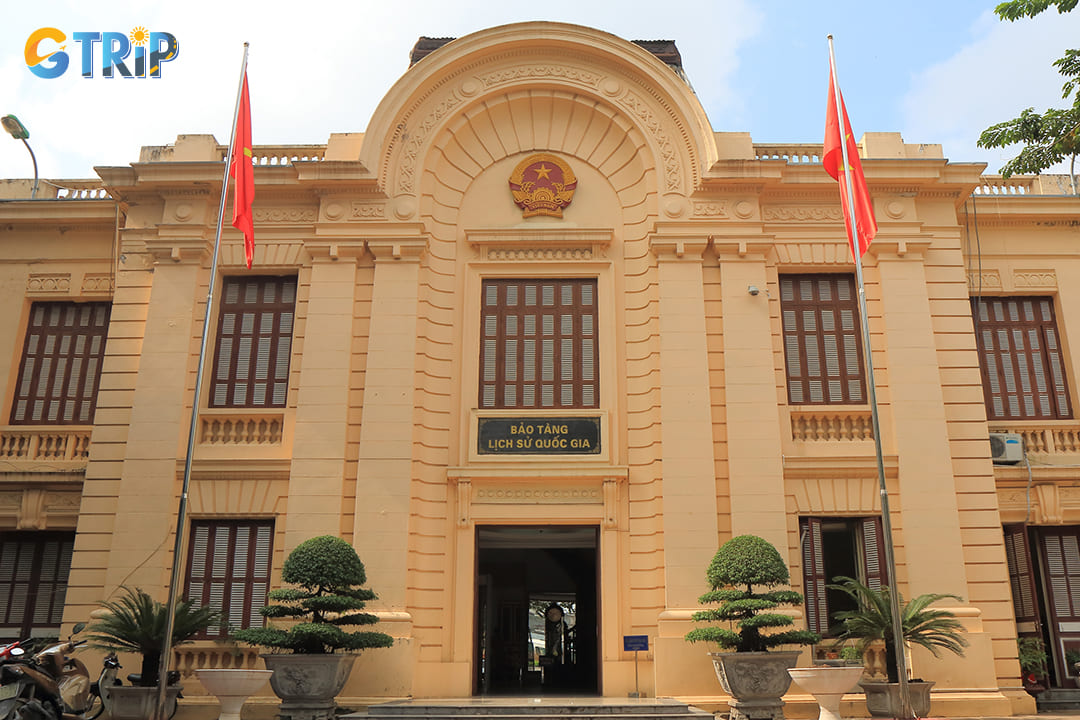
The Vietnam Museum of Revolution chronicles Vietnam's struggle for independence through an extensive collection of artifacts, documents, and photographs
Vietnam National Museum of History (170m)
The closest attraction to the Geological Museum at just 170 meters away, the Vietnam National Museum of History spans two locations on Trang Tien Street and Tran Quang Khai Street. This comprehensive museum houses an impressive collection of artifacts chronicling Vietnam's development from prehistoric times through various dynasties to the modern era.
The museum's collection includes:
- Bronze Age artifacts from the Dong Son culture
- Ancient ceramics and pottery
- Religious sculptures and artifacts
- Royal regalia from Vietnamese dynasties
- Traditional costumes and textiles
- Archaeological discoveries from across the country
Highlights and Must-See Exhibits:
| Gallery | Key exhibits | Significance |
|---|---|---|
| Prehistory | Dong Son drums, stone tools | Showcases Vietnam's early civilizations |
| Imperial Era | Royal seals, thrones, weapons | Artifacts from Vietnam's imperial dynasties |
| Modern History | Documents, photographs | Covers the colonial period to independence |
| Cultural Heritage | Ethnic minority artifacts | Displays Vietnam's cultural diversity |
The museum offers a well-organized journey through Vietnamese history with informative displays in both Vietnamese and English. Tourists particularly interested in history should plan to spend at least 2 hours exploring the extensive collections, which provide essential context for understanding Vietnam's rich cultural heritage.
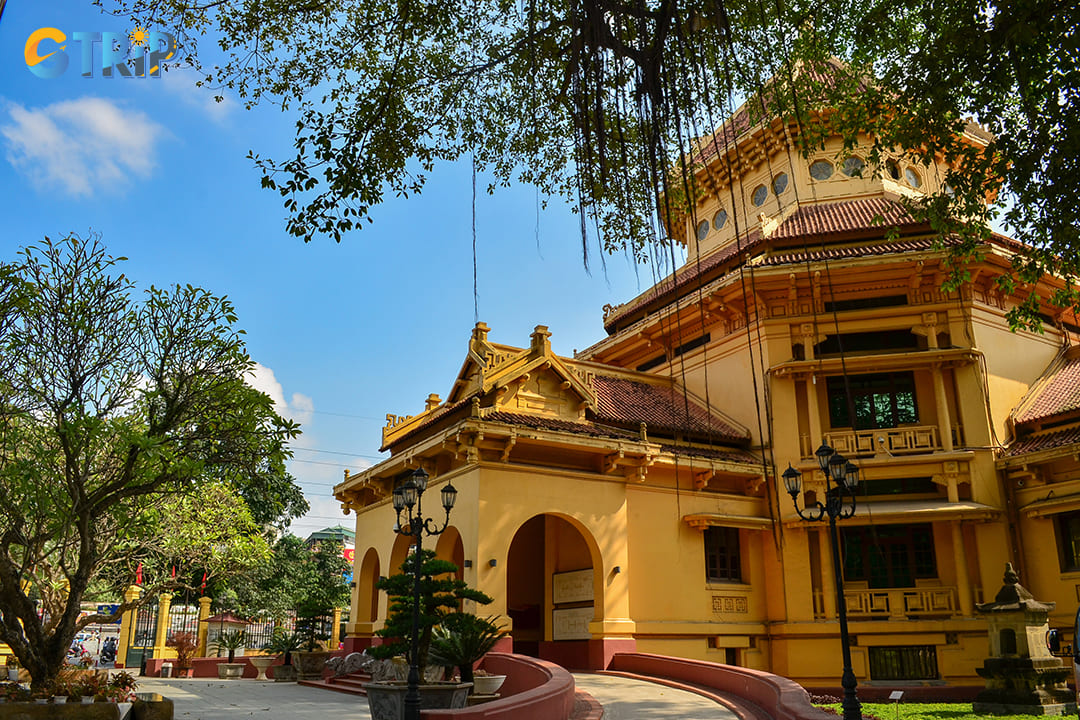
Vietnam National Museum of History houses an impressive collection of artifacts chronicling Vietnam's development from prehistoric times
Visiting the geological museum in Hanoi offers more than just a glimpse into the Earth's ancient secrets. It's an enriching journey that deepens your understanding of our planet's dynamic history. As you wander through the exhibits, you're not only observing rocks and fossils but also connecting with billion-year-old stories etched in stone. This experience is particularly rewarding for those intrigued by nature and its timeless marvels. Reflecting on what you've gained from this excursion provides both knowledge and inspiration, urging you to see the world from a new perspective. If you are keen on exploring this museum or other attractions in Hanoi, you can consider booking Hanoi tours of GTrip - Vietnam Travel Agency.

